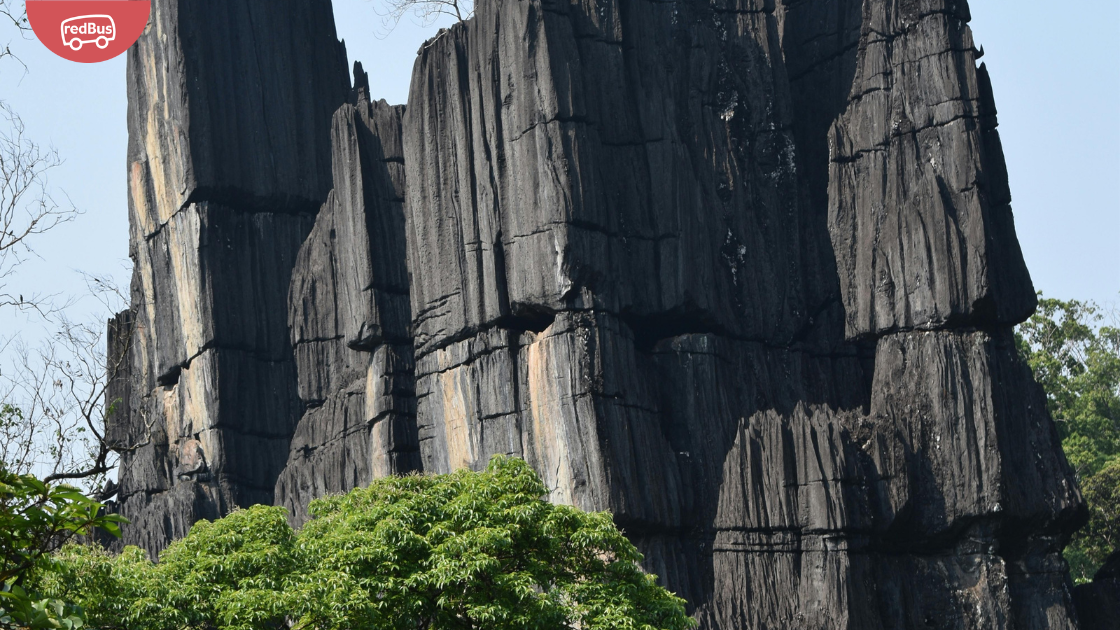As India gears up to celebrate its 75th Republic Day, it’s the perfect time to embark on a journey through the annals of history. Our diverse and culturally rich nation boasts a myriad of historical monuments and sites that resonate with the echoes of the past. This Republic Day, let’s uncover the stories and significance behind ten iconic historical places that reflect India’s heritage. redBus extends warm wishes for a joyful Republic Day 2024 and invites you to explore these remarkable destinations.
Red Fort, Delhi: A Symbol of Sovereignty
Our journey commences with the Red Fort in Delhi, a testament to India’s enduring sovereignty. Commissioned by Emperor Shah Jahan in the 17th century, this UNESCO World Heritage Site serves as the backdrop for the grand Republic Day parade, symbolizing India’s unity in diversity.
History: Built as a royal residence, the Red Fort’s towering walls have witnessed pivotal moments in Indian history. The historic speech of India’s first Prime Minister, Jawaharlal Nehru, marked the nation’s first Republic Day celebration on January 26, 1950.
Gateway of India, Mumbai, Maharashtra: A Colonial Marvel
Our next stop is the Gateway of India in Mumbai, a colonial-era masterpiece that stands as a symbol of the city’s grandeur. Erected to commemorate King George V and Queen Mary’s visit in 1911, it overlooks the Arabian Sea and has borne witness to many historical events.
History: The Gateway of India was the departure point for the last British troops as India gained independence in 1947. It remains an enduring emblem of India’s transition to a republic.
Rajpath, Delhi: The Ceremonial Boulevard
Returning to Delhi, we explore Rajpath, the ceremonial boulevard connecting the Rashtrapati Bhavan (Presidential Residence) to India Gate. This iconic road hosts the Republic Day parade, showcasing India’s rich cultural heritage.
Significance: Rajpath serves as a reminder of the immense diversity and unity of India, where people from every corner of the nation come together to celebrate Republic Day.
Sabarmati Ashram, Ahmedabad, Gujarat: Gandhi’s Abode of Peace
Moving westward, we reach the Sabarmati Ashram in Ahmedabad, a sanctuary of peace associated with Mahatma Gandhi. It was from here that Gandhi embarked on the historic Dandi March in 1930, a turning point in India’s fight for independence.
Legacy: Sabarmati Ashram stands as a living testament to Gandhi’s principles of non-violence and civil disobedience. It continues to inspire visitors with its simple yet profound message of freedom.
Wagah Border, Amritsar, Punjab: Unity Amidst Division
Our journey northward takes us to the Wagah Border near Amritsar, where the daily Beating Retreat ceremony marks the closing of the India-Pakistan border gates. The electrifying event underscores the shared history and rivalry between the two nations.
Spectacle: The Wagah Border ceremony is a remarkable display of precision and coordination between the border security forces of India and Pakistan, symbolizing the hope for peace in a divided region.
Jallianwala Bagh, Amritsar, Punjab: Remembering Sacrifice
A short distance from the Wagah Border, we find Jallianwala Bagh, a haunting reminder of one of the darkest chapters in Indian history. In 1919, hundreds of unarmed civilians were mercilessly killed by British troops in this public garden.
Remembering the Martyrs: Visiting Jallianwala Bagh is a solemn experience that pays tribute to the bravery and resilience of those who sacrificed their lives for the nation’s freedom.
Aga Khan Palace, Pune, Maharashtra: Witness to Incarceration
Our journey eastward takes us to the Aga Khan Palace in Pune, forever linked with India’s struggle for independence. This historic structure served as a prison for Mahatma Gandhi and other prominent freedom fighters.
Historical Significance: The Aga Khan Palace is not only a museum commemorating the independence movement but also a place of reflection and remembrance.
Jhansi Fort, Jhansi, Uttar Pradesh: The Rani’s Valor
Venturing further east, we arrive at Jhansi Fort, synonymous with the bravery of Rani Lakshmi Bai during the 1857 revolt against British rule. The fort’s imposing architecture and historical significance make it a must-visit destination.
Heroic Tale: Jhansi Fort echoes with the valor and indomitable spirit of Rani Lakshmi Bai, whose courage inspired generations.
Dandi, Gujarat: The Salt March that Shook an Empire
Returning to Gujarat, we visit Dandi, a coastal village where Mahatma Gandhi led the iconic Salt March in 1930. This peaceful protest against the British salt tax marked a turning point in India’s struggle for freedom.
Historical Walk: Walking in the footsteps of Gandhiji at Dandi allows us to connect with the spirit of non-violent resistance that shaped India’s destiny.
Netaji Bhawan, Kolkata, West Bengal: A Hero’s Residence
Our final destination is Netaji Bhawan in Kolkata, the residence of Subhas Chandra Bose, one of India’s most revered freedom fighters. The museum housed here celebrates his life and contributions to the independence movement.
Legacy Lives On: Netaji Bhawan stands as a tribute to the undying spirit of Subhas Chandra Bose and his unwavering commitment to India’s freedom.
Conclusion
As we conclude our virtual journey through these ten historical wonders, we are reminded of the sacrifices, struggles, and resilience of those who paved the way for an independent India. This Republic Day, let us honor their legacy by exploring these iconic sites and paying our respects to the nation’s glorious past.
redBus extends its heartiest wishes for a joyous Republic Day 2024. While you embark on this historical exploration, remember to book your bus tickets on redBus for a seamless and convenient journey. May this Republic Day be a celebration of unity, diversity, and the enduring spirit of India.







